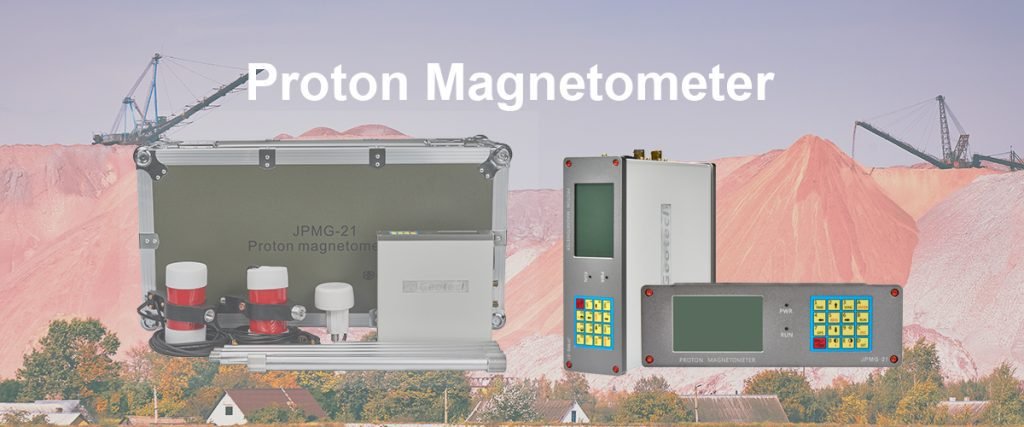Welcome to Geotech!

Geomagnetic Survey Equipment: Types & Selection Guide for Accurate Measurement
TIPS:In geophysical exploration and geomagnetic research, geomagnetic survey equipment is key. This overview covers types like magnetometers and integrated systems. Learn how to pick the right tools for accurate data in surveys and exploration.

Ⅰ. Introduction
In the fields of geophysical exploration and geomagnetic research, Geomagnetic Survey Equipment is the key to obtaining accurate geomagnetic data. Ranging from basic magnetometers to complex integrated exploration systems, different types of equipment play unique roles in geological surveys, resource exploration, and other tasks. This article provides a comprehensive overview of various geomagnetic survey equipment, details their characteristics and application scenarios, and offers a selection guide to help you choose the right geomagnetic measurement tools for your needs.
Ⅱ. Main Types of Geomagnetic Survey Equipment
1. Types of Basic Magnetometers
Geomagnetic survey equipment includes various magnetometers, such as the magnetometer for geomagnetic survey (also known as the magnetic sensor for earth magnetic measurement or geomagnetic survey magnetometer). The proton precession magnetometer, with its simple principle and relatively high accuracy, is suitable for general geomagnetic monitoring. The optical pump magnetometer, on the other hand, excels in high sensitivity and fast response, and is often used in fine geomagnetic exploration projects. Different types of magnetometers meet diverse measurement requirements.
2. Integrated Exploration Equipment
Geophysical exploration equipment (also known as geological survey instruments or earth physics devices) includes integrated geomagnetic exploration systems, which integrate magnetometers, positioning modules, data processing units, etc. They can collect multiple sources of data, such as geomagnetic and position data, simultaneously. In large – area geological surveys and mineral resource exploration, they can efficiently obtain comprehensive information, providing comprehensive data support for geological analysis and decision – making.
Ⅲ. Characteristics and Application Scenarios of Equipment Types
1. Characteristics and Applications of Portable Equipment
Among the types of geomagnetic survey devices, portable equipment, such as handheld magnetometers, has the characteristics of small size and easy operation. They are suitable for scenarios such as rapid field geomagnetic surveys and geomagnetic detection at archaeological sites, facilitating workers to carry out measurement tasks anytime and anywhere and obtain basic geomagnetic data promptly.
2. Characteristics and Applications of Fixed Equipment
Fixed geomagnetic measurement equipment is usually installed at specific monitoring stations and can collect geomagnetic data continuously for a long time. In fields such as earthquake monitoring and geomagnetic observatory research, they can stably obtain long – term series of geomagnetic change information, providing data support for studying the long – term evolution laws of the geomagnetic field and capturing magnetic field anomalies preceding earthquakes.
Ⅳ. Selection Guide for Geomagnetic Survey Equipment
1. Selecting Based on Measurement Requirements
When conducting equipment selection for geomagnetic survey (also known as choice of geomagnetic survey tools or selection of earth magnetic equipment), if it is for short – term rapid field measurement, portable and easy – to – operate equipment is preferred. If long – term continuous monitoring or fine exploration is to be carried out, fixed and high – precision equipment is more suitable. Select rationally according to the time and accuracy requirements of the measurement tasks.
2. Considering Environmental and Budget Factors
Different application environments have different requirements for equipment. For example, in high – temperature and high – humidity environments, equipment with corresponding protective performance needs to be selected. At the same time, considering the budget, on the premise of meeting the measurement requirements, balance the performance and cost of the equipment to select a cost – effective geomagnetic measurement equipment.
Ⅴ. Application Value of Various Equipment in the Industry
1. Role in Geological Exploration
Geomagnetic survey equipment provides key geomagnetic data for geological exploration, helping to identify geological structures and delineate the distribution of mineral resources. Through the combined application of different equipment, a more comprehensive understanding of the magnetic field characteristics of underground geological bodies can be achieved, improving the efficiency and accuracy of exploration and promoting the development of the geological exploration industry.
2. Significance in Scientific Research and Monitoring
In the scientific research field, it provides basic data for geomagnetic research and the construction of geophysical models. In terms of monitoring, it plays an important role in the geomagnetic precursor monitoring of geological disasters such as earthquakes and volcanic activities, helping scientific researchers and monitoring institutions to capture anomalies in a timely manner and providing support for disaster early warning and research.
Ⅵ. Conclusion
Geomagnetic Survey Equipment comes in a variety of types, each with its own characteristics and application scenarios. From basic magnetometers to integrated exploration systems, different equipment meets diverse geomagnetic measurement needs. By understanding the types of equipment and following the selection guide, suitable tools can be selected to provide strong support for geomagnetic research, geological exploration, and other work. With the development of technology, geomagnetic survey equipment will continue to be upgraded, bringing more possibilities to related fields and promoting geophysical exploration and geomagnetic research to a new height.
Reference
- Society of Exploration Geophysicists (SEG) https://seg.org/
- Society of Environmental and Engineering Geophysicists (EEGS) https://www.eegs.org/
- Geology and Equipment Branch of China Mining Association http://www.chinamining.org.cn/
- International Union of Geological Sciences (IUGS) http://www.iugs.org/
- European Geological Survey Union (Eurogeosurveys) https://www.eurogeosurveys.org/
-1.png)

